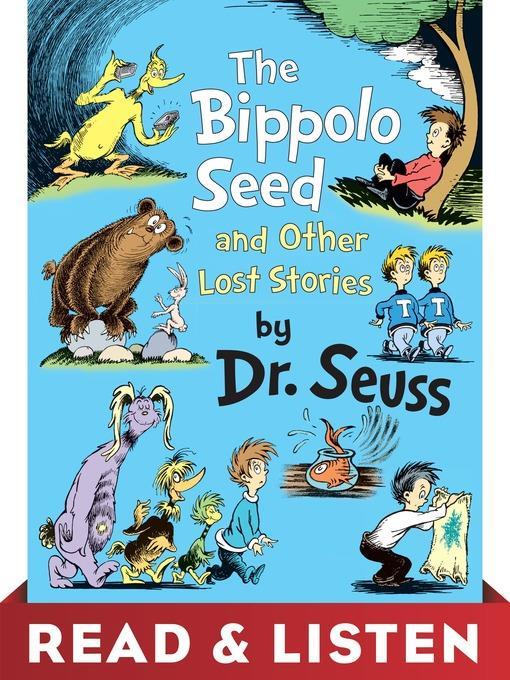
The Bippolo Seed and Other Lost Stories
Classic Seuss
کلاسیک سوس
فرمت کتاب
ebook
تاریخ انتشار
2013
Lexile Score
590
Reading Level
2-3
ATOS
3.6
Interest Level
K-3(LG)
نویسنده
Dr. Seussشابک
9780385383097
کتاب های مرتبط
- اطلاعات
- نقد و بررسی
- دیدگاه کاربران
نقد و بررسی

Starred review from August 22, 2011
This volume collects seven joyous Seuss stories that were published in Redbook in 1950 and 1951 but had never appeared in book form. In an insightful introduction, Seussian scholar Charles D. Cohen notes that Seuss wrote these tales at a transitional point in his career, when he grasped the importance of using the sounds of words to hook children on reading. The stories’ rhymed couplets are pitch-perfect, the verse’s rhythm as snappy as in any of Seuss’s better-known works. In the title story, a duck and a cat’s greed spins out of control as they imagine everything that they’ll wish for from a magical seed. In “Steak for Supper,” an outlandish menagerie follows a boy home to dine: “A Nupper for supper! A Gritch! And a Grickle!/ And also an Ikka! Oh, boy! What a pickle!” These creatures and others are portrayed with Seuss’s trademark exaggeration and whimsy. The limitations of the source material are occasionally apparent—the longer stories overcrowd certain pages with text, the artwork sometimes feeling stretched to fit the format. Regardless, fans old and young will deem these “lost” stories a tremendous find. Ages 6–9.

Starred review from September 1, 2011
Seven rhymed tales, dug from hard to find places! Look for millions of Seuss fans with bright shiny faces!

February 1, 2012
K-Gr 6-Seven stories published in magazines from 1948 to '59 appear with their original texts and illustrations, all of which have been technologically enhanced. In a lengthy introduction, Seuss scholar Charles D. Cohen describes his research in uncovering these stories and the ways in which they resonate with familiar Seussian elements and themes. Youngsters see the folly of greed when the duck in "The Bippolo Seed" wants more than he needs and ends up with nothing. The message in "The Rabbit, the Bear, and the Zinniga-Zanniga" is that, ."..when you fight with Big Guys.../A bit of Quick-Thinking/counts much more than size!" An illustration of the foolish bear atop the tree while the rabbit escapes adds to the fun. "Gustav, the Goldfish" and "The Strange Shirt Spot" demonstrate the consequences of not following the rules. Unable to settle on one occupation, the protagonist in "The Great Henry McBride" dreams big, convincing himself and children everywhere that they can be and do anything. The delightful rhythm, tongue-tickling language, and trademark art exemplify how Seuss's work has delighted generations of readers and made learning to read fun.-Marianne Saccardi, formerly at Norwalk Community College, CT
Copyright 2012 School Library Journal, LLC Used with permission.

























دیدگاه کاربران